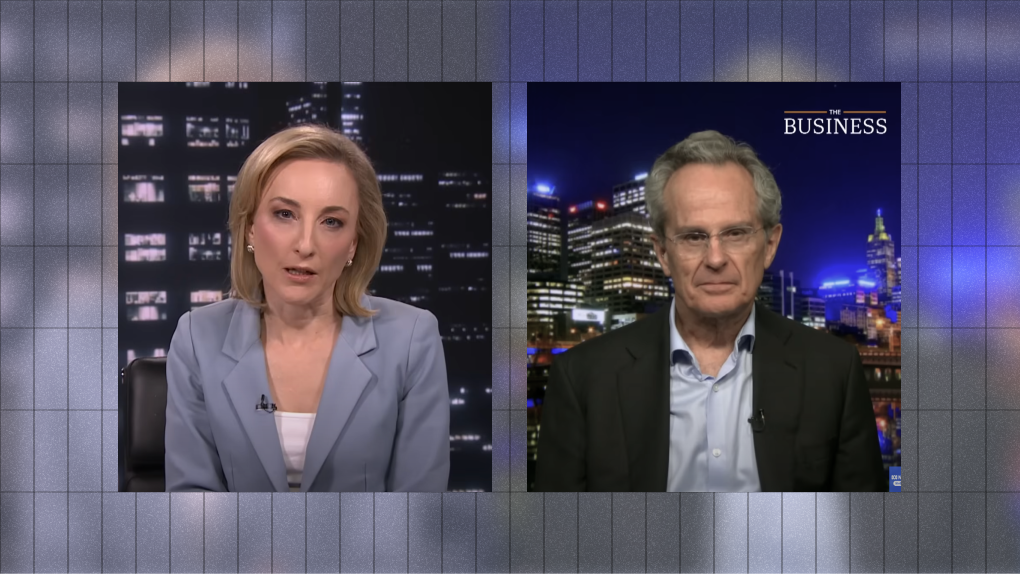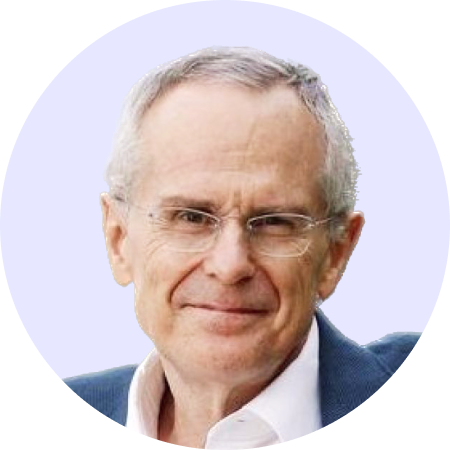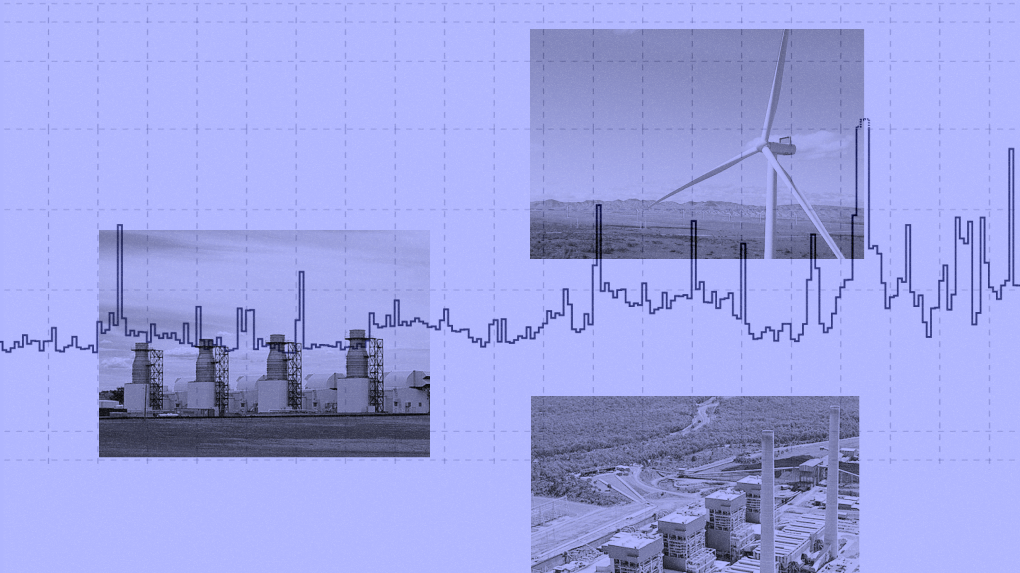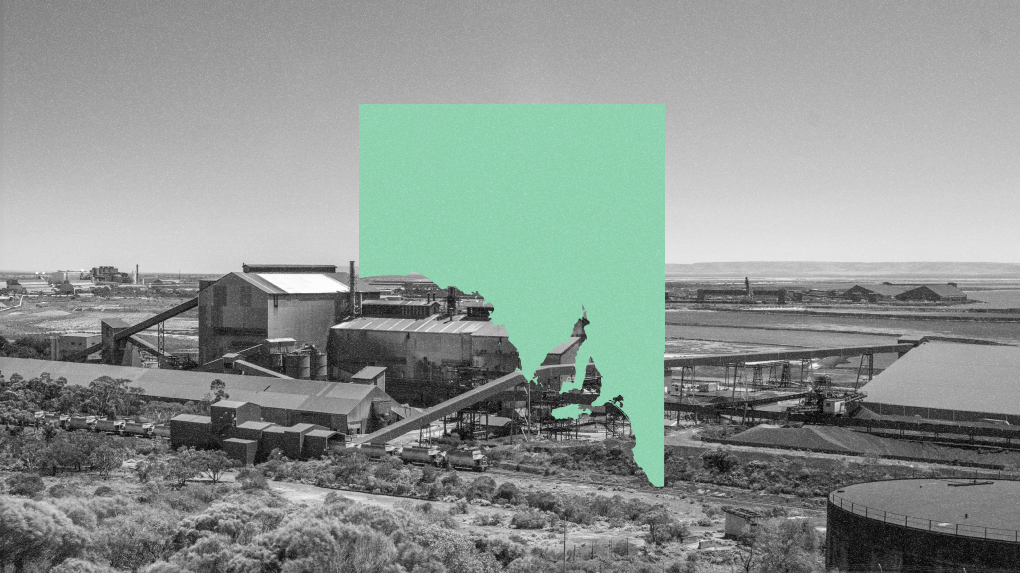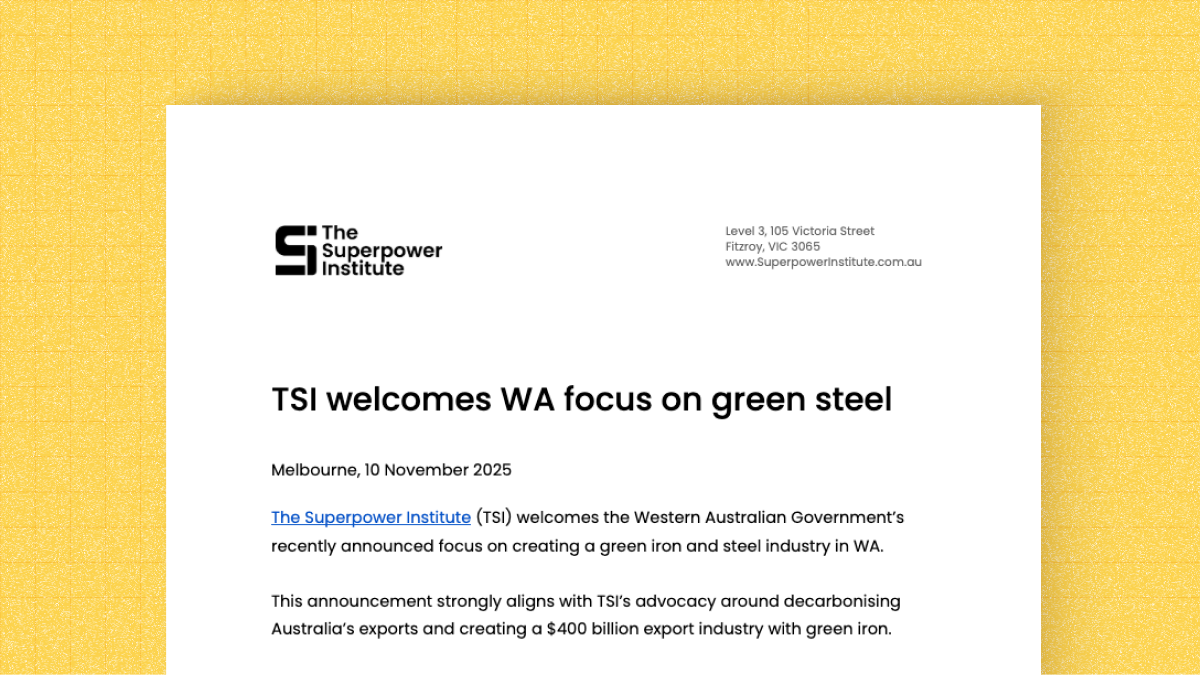As the world moves to decarbonise, revenues from Australia’s coal and gas exports are under threat. But with the right policies, we can replace them with green iron – a $400 billion opportunity.
TSI Chair Rod Sims spoke with ABC’s Alicia Barry about how TSI’s new report, A Green Iron Plan for Australia, lays out a path to make that happen.
TRANSCRIPT:
Alicia Barry:
Australia’s biggest exports – iron ore, coal and gas – are under threat as the world decarbonises.
That’s the claim of The Superpower Institute, which has a plan to turn Australian ore into green iron, harnessing renewables. The Institute says if Australia can get it right, it’s a $400 billion annual export opportunity. Rod Sims is The Superpower Institute’s Chair.
Rod Sims, welcome to Close of Business.
Rod Sims:
Thank you, Alicia.
Alicia Barry:
You say that there have been market failures holding investment back in green iron production. Was axing the carbon tax in Australia one of those failures?
Rod Sims:
No it wasn’t, because we’re talking about an export industry here. So it’s the price on carbon that you want at a world scale – it’s a world price you need, not an Australian price. Now, there is a carbon price in Europe – a pretty big country. There’s a small one in China. They’re moving towards them in other places, but they’re not there yet. So we’re saying: government, just fill that gap for a short while, to make sure we get projects going in Australia – and that we get them going quickly.
Alicia Barry:
Your report models five locations where iron can be produced using renewables. What’s the feasibility of this? I mean, are the big miners going to become manufacturers?
Rod Sims:
No they’re not – and that’s the key point. You’ve put that very well. Miners are not manufacturers. The people who are going to do this are going to be the big iron and steelmaking companies in Northeast Asia. And obviously POSCO – I think Korea’s largest iron and steelmaker – has already expressed an interest. They’ve got a team here looking at it. One exception to miners not being manufacturers, of course, is Andrew Forrest – he has a pilot plant to make green iron, so he might be a candidate. But no – BHP and Rio, they’re miners, not manufacturers.
Alicia Barry:
And what’s the timeframe that we could see this in action?
Rod Sims:
Well I think the main message I’d like to convey is: the package we’ve put up is all the government needs to do. There’s people talking about this, saying “Oh, we’ve got to go overseas and get demand for green iron because there’s a green premium.” No, no – we’ve dealt with that with the $170-a-tonne production credit. With that credit, and with a bit of help on the capital side – which I’ve mentioned – Australian green iron can outcompete iron made with fossil fuel now.
We’ve mentioned a number of locations where this can happen. The best two are the Eyre Peninsula in South Australia and Geraldton in Western Australia – but there’s other places as well. So I would like the government to put in place this policy package very soon. If they were to do it in 2025, we would hope to have final investment decisions on projects by 2026–2027.
Alicia Barry:
Your report claims a green iron industry could abate emissions by more than three times Australia’s yearly emissions. But is there a danger the approval of the extension of Woodside’s Northwest Shelf project could undo that?
Rod Sims:
No – look, they’re separate issues. Australia, if it makes all the green energy-intensive projects that it should, could help the world reduce carbon emissions by up to 10% of emissions. Now you might think that’s a big role – but it’s no different to the role we play as the world’s biggest gas and coal exporter.
So we’re just substituting one fantastic advantage – in gas and coal – to the fantastic advantage we’ve got in solar and wind.
If the world’s going to reduce emissions, it needs Australia. If Woodside want to make a bet that the world’s not serious about reducing carbon emissions – they may be right. But it’s a big bet. I mean, if the world’s going to be serious about reducing carbon emissions and getting to net zero, you won’t be using gas in 2070.
So, big bet by Woodside. Big call. Theirs to make. I assume they’re obviously factoring in that the world is not serious about moving to net zero. I think they’re wrong, but they’ve made a different bet.
Alicia Barry:
It was the federal environment minister that approved it though – is the government making the wrong bet?
Rod Sims:
Look, it’s very hard for the government, to be fair. And different people have different views on what the government could or should do, what the government powers are. My bigger point is that when companies do a massive investment like Woodside want to do – planning on the world wanting a hell of a lot of gas in 2060 and 2070 – they’re making a big bet against the climate science, against the world moving to net zero. And my guess is it’s going to cost them a lot of money because they’ll get that bet wrong.
I could be wrong – but in any event, if I could make a key point: Australia is a big exporter of coal, gas, iron ore. You can replace all those exports with green iron. So don’t have all your eggs in one basket.
Alicia Barry:
And have you got the ear of the government on this?
Rod Sims:
They’re certainly listening. We had many government ministerial advisers and very senior public servants to our launch on Monday. They’re well aware of the arguments – we talk to them a lot. Look, my guess is that the public service at senior levels understands what we’re saying and has a lot of sympathy for it. Let’s hope they can get the politicians over the line. That’s what we’ve really got to do. And as I say, I think it’s a real winner. I can’t actually see the political downside to doing this – so I can’t see why they wouldn’t get right behind this.
Alicia Barry:
Rod Sims, thank you so much.
Rod Sims:
Thank you.
Rod Sims
Chair, The Superpower Institute
Rod Sims is Enterprise Professor at the Melbourne Institute of Applied Economic and Social Research, Faculty of Business and Economics, University of Melbourne, and Chair of The Superpower Institute. He previously chaired the ACCC (2011-2022), served as Deputy Secretary (Economic) in the Department of Prime Minister and Cabinet, and Principal Economic Adviser to PM Bob Hawke (1988-1990).
